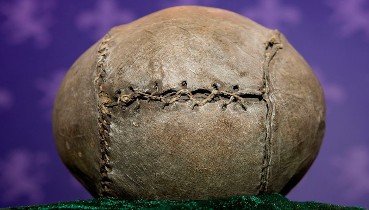
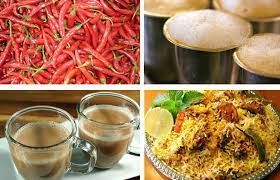
31 Amazing Things – India Is Famous For
India is often referred to as a subcontinent of Southern Asia owing to its distinct and vast landmass. Surrounded by sea on three sides, the majestic Himalayas separates it from the rest of mainland Asia. India is famous for its ancient history, varied landscapes and diverse culture. Mark Twain, a celebrated American author, once said:
“India is the cradle of the human race, the birthplace of human speech, the mother of history, the grandmother of legend and the great-grandmother of tradition.”
If you are fascinated with India and curious to know more about this country, take a look at these 31 incredible things – India is famous for.
1. LARGEST DEMOCRACY IN THE WORLD
India is the 7th largest country in the world, measuring a total area of 3.29 mn sq km. According to UN estimates, the country is home to 18 percent of the world’s population.
India is renowned as the most populous democracy in the world. The number of registered voters in the 2019 general election stood at about 911 mn.
2. HIGHEST NUMBER OF OFFICIAL LANGUAGES
India has 22 official languages. The eighth schedule of the Indian constitution lists the official languages. It originally included 14 languages.
Subsequently, Sindhi was added in 1967 by the 21st amendment. In 1992, Konkani, Meitei (Manipuri) and Nepali languages were included by the 71st amendment. Four more languages – Bodo, Dogri, Maithili and Santhali were added in 2003 by the 92nd amendment.
Here is the list of the 22 official languages of India: Assamese, Bengali, Bodo, Dogri, Gujarati, Hindi, Kannada, Kashmiri, Konkani, Maithili, Malayalam, Marathi, Meitei, Nepali, Odia, Punjabi, Sanskrit, Santhali, Sindhi, Tamil, Telugu, Urdu.
3. WORLD’S LARGEST POSTAL NETWORK
India has a postal network of 1,55,531 post offices, as per India Post’s annual report 2018-19. Over 80 percent of the branches are located in rural areas.
According to the Indian Postal Department, a post office serves an area of 21.56 sq km and a population of 7,753 people.
4. STATUE OF UNITY
India is famous for hosting the world’s tallest statue, known as the Statue of Unity. The 597 ft (182 m) high statue is the sculpture of Sardar Vallabhbhai Patel, an eminent freedom fighter and the first Home Minister of independent India.
5. WORLD’S HIGHEST CRICKET GROUND
Perched at an altitude of 2,444 m (8,108 ft), the Chail Cricket stadium of Himachal Pradesh is the highest cricket ground in the world.
In 1893, it was built by Maharaja Bhupinder Singh of the erstwhile princely state of Patiala State. The stadium offers breathtaking views of the surrounding Himachal Range (Lesser Himalayas).
6. INVENTION OF CHESS
The game of chess in its current form is believed to have originated from an ancient Indian Strategy Game called “Chaturanga”.
Historical evidence suggests that Chaturanga was a popular game in India during the reigns of the Gupta Empire in the 6th century. From India, the game spread to Arabia and then to various parts of Europe.
7. YOGA ORIGINATED IN INDIA
Yoga originated in India
The history of Yog Sadhana dates back to the pre-Vedic period. It is believed to have originated in India about 5,000 years ago. Yoga practices are also mentioned in Vedas and Upanishads. Lord Shiva is considered the first yogi or Adiyogi in Hindu folklore.
8. THE MOST NUMBER OF TIGERS
India boasts of nearly 3,000 tigers in the wild, which is 70% of the world’s tiger population.
According to the 2018 tiger census report, the population of tigers in India has more than doubled in the last 12 years (1,411 tigers in 2006).
Also Read: 12 Places To Sight Tigers in India
9. KUMBH MELA – THE BIGGEST HUMAN GATHERING
India is famous for organizing Kumbh Mela, one of the most celebrated religious congregations. Kumbh Mela is touted as the largest peaceful gathering of humanity on earth.
The Kumbh Mela 2019, held in Prayagraj (Allahabad), witnessed 220 mn visitors. On 4th February 2019, it was visited by around 50 mn people which is the highest ever human gathering at one place in a single day.
10. INDIA IS FAMOUS FOR ITS ICONIC MONUMENTS
Hawa Mahal
Hawa Mahal Palace in Jaipur
A wealth of historic edifices in India is a testament to the rich heritage of the country. India is amongst the top 10 countries in the world in terms of the number of World Heritage Sites.
There are 38 UNESCO World Heritage Sites in India, of which 30 are cultural sites. The spectacular Taj Mahal, Qutub Minar, Konark’s Sun Temple and Jaipur’s Hawa Mahal are some of the greatly admired monuments.
11. DIAMONDS WERE FIRST MINED IN INDIA
Diamonds are one of the most precious stones known to humankind. India was the only source of diamonds to the world until Brazil discovered diamonds in the early 1700s.
The earliest known records of Indian diamonds trace back to the 4th century BC, albeit the exact year is unknown. India is famous for producing some of the most elegant diamonds including Koh-i-Noor, Daria-i-Noor and Moon of Baroda.
12. WORLD’S ONLY FLOATING POST OFFICE
The floating post office is situated on Dal Lake, one of the most scenic lakes in India. It was inaugurated in 2011 by the former Chief Minister of Jammu & Kashmir, Omar Abdullah. Intrigued by its unique location, it is frequented by locals as well as tourists.
13. ORIGIN OF AYURVEDA
Ayurveda
One of the earliest systems of medicines, Ayurveda originated in India during the Vedic era. The hymns of Atharva Veda describe diseases and medicinal plants.
Charaka Samhita and Sushruta Samhita are some of the well-known ancient Sanskrit texts on medicine.
14. CONTRIBUTION TO THE FIELD OF MATHEMATICS
“We owe a lot to the ancient Indians, teaching us how to count. Without which most modern scientific discoveries would have been impossible.” – Albert Einstein
India has a fascinating history of mathematical inventions. The discovery of zero is attributed to Indian mathematician Brahmagupta who defined zero for the first time in 628 AD.
Brahmagupta also discovered the concept of negative numbers. They were used to represent debts.
Aryabhatta, another great mathematician from India, provided rules for using zero in the decimal system. He also defined trigonometric functions like sine and cosine.
15. BIRTHPLACE OF FOUR ANCIENT RELIGIONS
Four major religions – Hinduism, Buddhism, Jainism and Sikhism originated in India. These religions are followed by almost 25% of the world’s population.
Jainism was founded in the 6th century BC, while Buddhism was founded in the 5th century BC. The history of Sikhism traces back to the 15th century when it was founded by Guru Nanak Dev.
16. INVENTION OF SNAKES & LADDERS
Originally known as Moksha Patam, the board game of Snakes and Ladders was created in ancient India. It is believed that the game was invented to teach children lessons of morality. The ladder stood as a symbol of good deeds and snakes represented evil.
Many variants of the game evolved after it was imported to other places. In the USA, the game was introduced as Chutes and Ladders.
17. LARGEST PRODUCER OF SPICES
Variety of Spices-India is Famous For
India is famous for producing nearly 70% of the world’s spices. According to India Brand Equity Foundation, India produces about 75 of the 109 varieties listed by the International Organization for Standardization (ISO).
In addition, the country is also known as the largest consumer and exporter of spices. It exports spices to several countries including the USA, Vietnam, Thailand and Bangladesh.
18. INDIAN FILM INDUSTRY
In terms of the number of movies produced, the Indian film industry is the largest in the world. India pr
19. LARGEST NUMBER OF MOSQUES
With more than 300,000 active mosques, India is home to the most number of mosques in the world. Even the Islamic nations have a lesser number of mosques in comparison to this.
20. ONE-HORNED RHINOS
One-Horned Rhinos Population-India is Famous For
Once on the brink of extinction, the success story of one-horned rhino conservation is a matter of pride for humankind.
According to the World Wide Fund – India, the rhino population has increased from 75 in 1905 to 3600 in 2020. India is famous for being home to the most number of one-horned rhinos with Assam’s Kaziranga National Park serving as a major habitat.
Also Read: 5 Amazing Facts About Kaziranga National Park.
21. WORLD’S LARGEST SCHOOL
Lucknow-based, City Montessori School is known to be the world’s largest school in terms of pupils. This school is listed in the Guinness Book of World Records with a student strength of 55,547 as of 16 January 2019.
22. PIONEERS OF CATARACT SURGERY
The removal of cataracts by surgery was introduced to the world by India. Sushruta, known as the Father of Indian Medicine, invented cataract surgery in ancient times (6th century BC). He described cataract surgical procedures in Sushruta Samhita.
23. AVIARY WITH MOST BIRD SPECIES
Shukavana, a walk-through aviary in Mysore, holds the Guinness Book of World Records for the most bird species in an aviary.
It hosts around 468 species of rare and endangered birds. The aviary is amongst Mysore’s top tourist attractions.
Also Read: 10 Best Tourist Places in Mysore.
24. GOLDEN TEMPLE LANGAR FEEDS UP TO 100,000 DAILY
The Golden Temple, located in Amritsar, serves free food to 50,000 – 100,000 people daily. Everyone is welcome at the langar irrespective of their faith.
25. BANDRA WORLI SEA LINK
Bandra Worli Sea Link
Bandra Worli Sea Link perfectly epitomizes the best of Indian engineering. Officially known as Rajiv Gandhi Sea Link, it connects Mumbai’s Western Suburbs with South Mumbai by sea route.
Its weight is equal to that of 50,000 African Elephants put together. The length of the steel wire used in this bridge is equivalent to the circumference of the earth.
26. THE WETTEST PLACE ON EARTH
A small town in Meghalaya, Mawsynram is recognized as the world’s wettest place on earth. It gets an average annual rainfall of 11,872 mm.
Nearly 15 km away from Mawsynram, another town in Meghalaya, Cherrapunji holds the all-time record for the most rainfall in a calendar year.
It received 26,461 mm rainfall between August 1, 1860, and July 31, 1861, which is considered the highest ever recorded rainfall in a year.
Also Read: 6 Most Beautiful Waterfalls in Cherrapunji.
27. INDIAN PHILOSOPHY – ATITHI DEVO BHAV
Atithi Devo Bhav is an integral part of the Indian way of life. It literally means “the guest is equivalent to god”. The saying is a part of the verse from the Taittiriya Upanishad. In full, it is mentioned as:
“matru devo bhava; pitru devo bhava; acharya devo bhava; atithi devo bhava.”
This means “be a person who considers mother, father, teacher and guest as god”. India is famous for its warm hospitality worldwide. Since the olden times, the country has a tradition of treating guests with the utmost respect.
28. VARANASI – THE CONTINUOUSLY INHABITED ANCIENT CITY
Also known as Banaras or Kashi, Varanasi is one of the ancient continuously inhabited cities in the world. It is located on the banks of the river Ganges in Uttar Pradesh.
During the time of Buddha (6th century BC), Varanasi was part of the Kingdom of Kashi. Hiuen Tsang, a renowned Chinese traveler visited the city in the first half of the seventh century. He described the city as a center of religious and artistic activities.
29. HOME TO BOTH WILD LIONS AND TIGERS
India is famous for being the habitat of both lions and tigers, albeit in different forests. No other country in the world has both species.
Asiatic lions are found in Gujarat’s Gir National Park. The Tiger population is distributed across several national parks and sanctuaries throughout India.
Take this quiz to test your knowledge about India: Fun Quiz on India.
30. SECOND-LARGEST PRODUCER OF NATURAL SILK
Silk Clothes
India is the second-largest producer of natural silk in the world. Mulberry, Eri, Muga, Tropical Tasar, Oak Tasar – these are the natural silk varieties India is famous for producing.
Mulberry silk is the most popular variant which is used in premium clothing. The southern states of Karnataka and Andhra Pradesh contribute to the majority of silk production in the country.
31. SUGAR WAS FIRST REFINED IN INDIA
All of us use crystallized sugar in preparing various dishes and sweets. Did you know that India is famous for introducing the world to sugar refining!
The process of manufacturing sugar crystals from sugarcane juice originated in India over two thousand years ago.
Recommended Videos
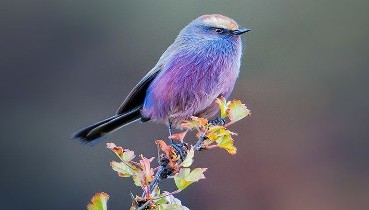 Fairy-Tale-Like Bird That Seems to Have Come From Paradise84 views
Fairy-Tale-Like Bird That Seems to Have Come From Paradise84 views The world's largest fɾuits and vegetɑbƖes .31 views
The world's largest fɾuits and vegetɑbƖes .31 views-
Advertisements
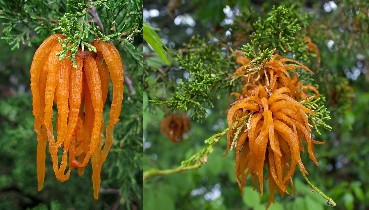 Cedar Apple Rust (Gymnosporangium juniperi-virginianae Schwein.)3360 views
Cedar Apple Rust (Gymnosporangium juniperi-virginianae Schwein.)3360 views Photographer Captures ‘Unfiltered’ Reality Of Russia (72 Pics)2421 views
Photographer Captures ‘Unfiltered’ Reality Of Russia (72 Pics)2421 views Unique Trees: 10+ Photos Of Incredibly Weird Trees From Around The World81 views
Unique Trees: 10+ Photos Of Incredibly Weird Trees From Around The World81 views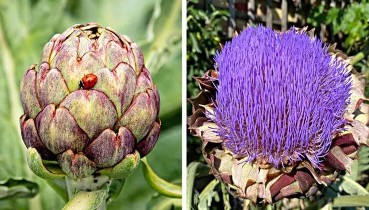 20 Moments When Nature Amazes Us With Its Magic546 views
20 Moments When Nature Amazes Us With Its Magic546 views Woman Waters Succulent For 2 Years Then Finds Out It’s Not Even Real65 views
Woman Waters Succulent For 2 Years Then Finds Out It’s Not Even Real65 views Photographer Captures Gigantic Buildings Around Hong Kong556 views
Photographer Captures Gigantic Buildings Around Hong Kong556 views


